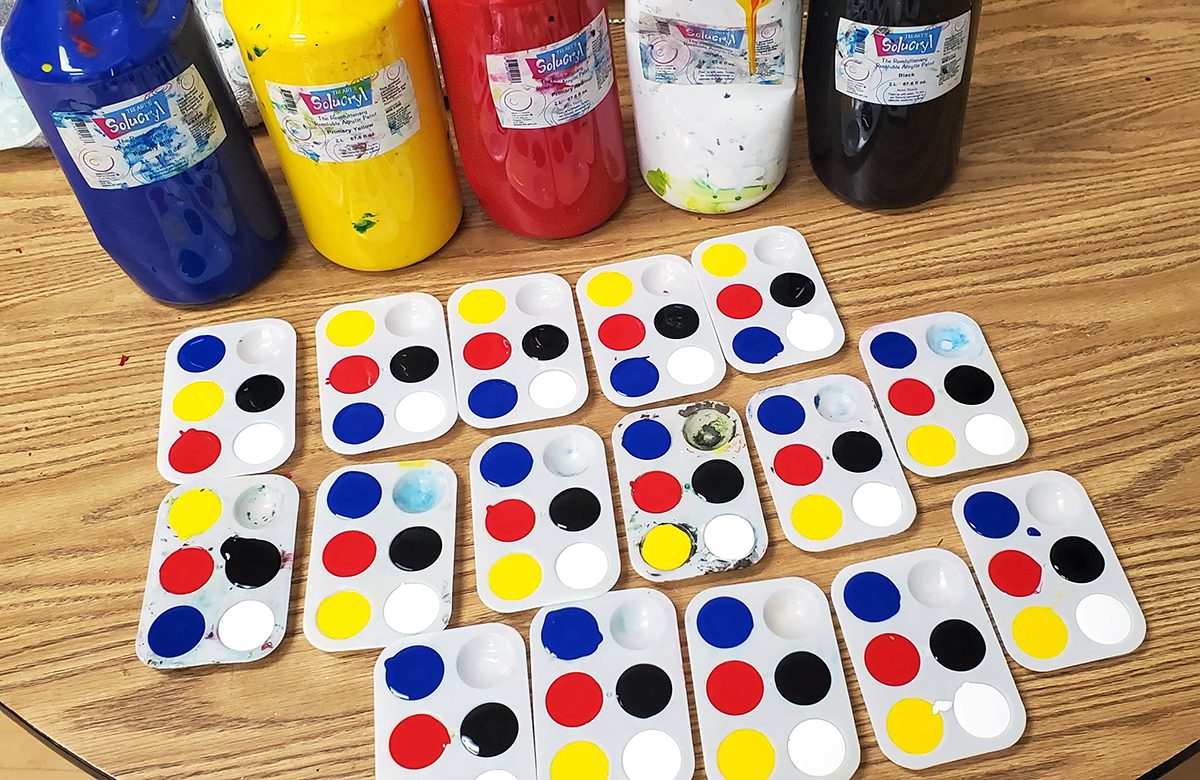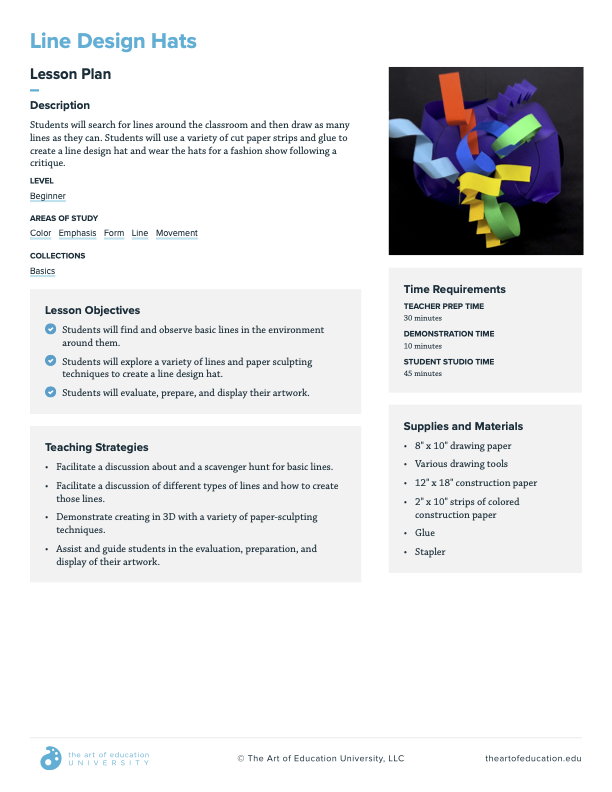From parental or family needs to quarantine, there are many reasons to take leave. Whatever the case, advance planning for extended leave will ensure you, your colleagues, and your students are prepared at a moment’s notice. Taking time away from your classroom doesn’t have to be a daunting feat, even if you have a bazillion materials. Strong classroom management techniques, innovative organizational strategies, and lessons implemented over distance learning all can help. There are new ways to take the stress out of entrusting your substitute teacher with managing your art room in your absence.
We are going to look at four components that will help you prepare your art room for a sudden or anticipated leave of absence.
1. Set the tone.
For some students, it can be disappointing and disruptive when their teacher is on extended leave. If you are able to, it can be a good idea to prepare students for a planned leave or potential unexpected absence ahead of time. Whenever possible, give students the chance to process how it might affect them so they can better understand how their art class will be structured.
We feel proud when a student has our routines and systems down pat. The true test of whether or not you have strong classroom management happens when you have to step out of the room unexpectedly. Can the students manage appropriately with another teacher? While we want our students to learn our expectations and participate in our procedures, we do not want them to continually tell another adult that they are doing something wrong. This can wear on a substitute’s spirit. Be proactive with an SEL-based approach, and empower your students to handle changes and differences with grace, empathy, and an open mind. Remind students that taking on a new role can be challenging for anyone, including a substitute teacher.
Here are some classroom management tips that can reinforce clear expectations for your substitute teacher:
- Reassure students that it’s okay if routines are handled differently when a substitute teacher is in the room; a supportive community acknowledges that differences are okay!
- Practice skills and rehearse procedures you expect students to carry out while away. This can include wearing name tags, having their names called according to a seating chart, reading the daily objective, material distribution, artwork storage, and cleanup.
- Leverage students’ sense of order, ownership, and deep desire to be helpful by delegating classroom jobs. Table captains, teacher assistants, office runners, and cleanup managers are valuable allies who can support the substitute teacher while upholding strong classroom management.
2. Plan out your lessons.
You established a plan for communicating a planned or unexpected leave to students. Now it’s time to consider what they will create in your absence. The lessons you plan may depend on who will handle your coverage and the experience level of your substitute teacher. You may feel confident leaving multi-step, material-heavy, process-based lessons with an experienced art teacher who knows their way around the studio. They can follow your plan or improvise as needed.
However, trained art room substitutes can be hard to come by. Many substitutes may feel intimidated when coming into your art classroom. Our FLEX Curriculum can take the guesswork out of lesson planning with easy-to-follow directions. Many FLEX lessons require few materials and can be adapted for substitutes.
Check out these three FLEX Lessons to see how they can easily be adapted for a substitute. Each of these lessons and so much more can be found in FLEX Curriculum.
1. Line Design Hats
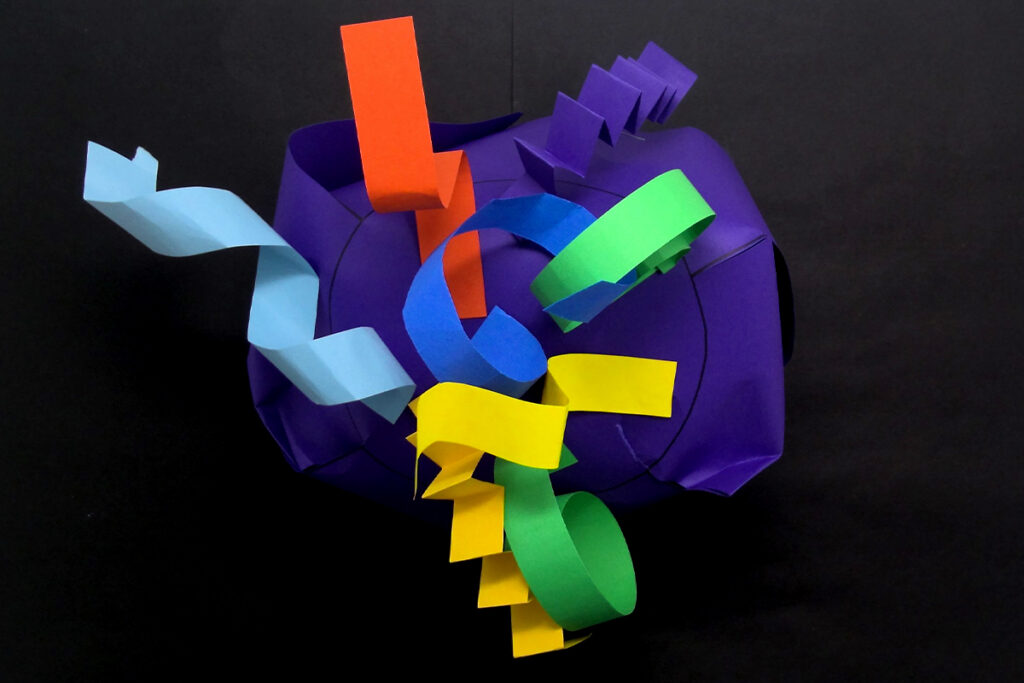
For your youngest students, this lesson requires nothing more than a pencil, scissors, glue stick or stapler, and colorful construction paper scraps! Consider adapting this lesson on a larger scale for middle school and above. Use cardboard, poster board, hot glue, and box-cutting tools to design constructions as group projects or team building activities!
Take a look at this complimentary download so you can see exactly how our FLEX lessons make planning a breeze!
Download Now!
2. Intuitive Line Painting

In this painting lesson, dry media can replace paint to minimize the cleanup. Advanced students can practice blending techniques with watercolor paint or a limited color palette of acrylic paints. The written component has easy tie-ins for literacy, social-emotional learning, setting intentions, and reflection.
3. Cut Paper and Carrie Mae Weems

This intermediate lesson can be modified for younger or beginner students by using scissors instead of craft knives. Older or more advanced students can follow the steps as-is or add a layer of painted detail on top. If time permits, add a storytelling component. Students narrate their collage by writing a poem or in-depth essay about a mundane or profound experience in their life.
For even more lesson plans that are substitute-friendly, check out How to Simplify and De-Stress Your Sub Plans This Year.
3. Organize your materials.
Thoroughly organizing and clearly labeling your materials will support the smooth implementation of your lessons. The primary goal is to set up the most “intimidating” of art materials in the most empowering way.
Let’s look at six systems that will take your organization to the next level!
1. Digital Sub Binder
This method is a great idea whether or not you will be absent! Storing your “classroom basics,” such as seating charts, lessons, and emergency protocols on a cloud platform means the files will be accessible from anywhere and with anyone that you choose to share them with. Add photos of how the materials should be arranged and stored, lessons and instructions, and any relevant links to videos, tutorials, or inspiration imagery. Ensure the supplies available in your classroom match the materials listed in your instructions. Include a welcome and thank you letter to your substitute teacher(s) to show your care and appreciation.
Our PRO Pack, Planning for Substitutes, is an excellent resource for helping you organize a physical or digital binder. You can find this Pack in PRO Learning.
2. Copy Box Lids
Copy box lids, cardboard can pallets, or plastic bins all work! Use one copy box lid or container per lesson. Depending on the length of time you will be away, you may need a few or a couple dozen of these. Consider collecting them from around the building well ahead of time so you can prep these in advance. Place the lesson instructions with grade levels and class names, lesson exemplar, and all materials needed, pre-cut and pre-counted inside. Label the side of the container with the lesson name and grade level before stacking them on a shelf.
Pro tip: Reinforce the corners of cardboard lids and pallets with duct tape to make them stand the test of time.
3. Art Kits
One takeaway from distance learning is the creation of “art kits,” where each student gets a designated set of supplies. This can streamline the distribution of supplies. It can also reinforce students’ ownership of their specific materials. This idea may be best implemented with smaller groups and older students depending on the number of materials needed and if you have the classroom storage space to keep them.
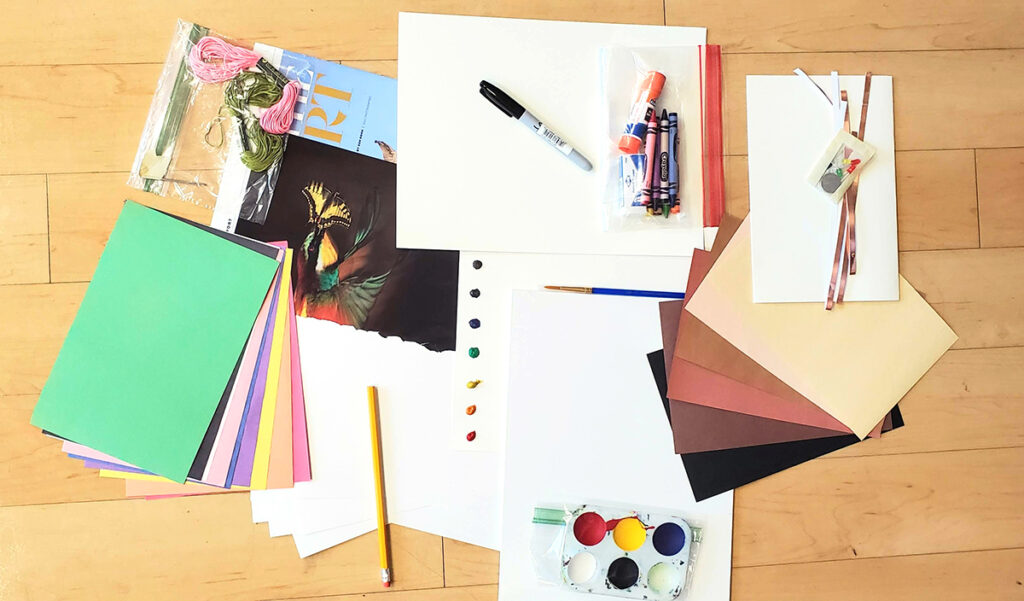
4. Photos
Take photos of areas of your classroom and what they should look like cleaned up. These visual reminders work well for your substitute teacher and students alike. Print and adhere the images to the inside of cabinets, above work and storage spaces, near supply stations, and especially the sink area. You can also save these photos in a designated folder in your digital sub binder.

5. Just Add Water (Cups)
Paint is often a scary material to substitutes, especially non-art-trained teachers. It comes with the potential of spills and splats, perhaps causing you to question if leaving a painting lesson is worth it at all.
Tried and true ways that allow for a streamlined painting process include:
- Individual watercolor paint trays
- Tempera cakes in pans
- Pumped paint in palettes and containers
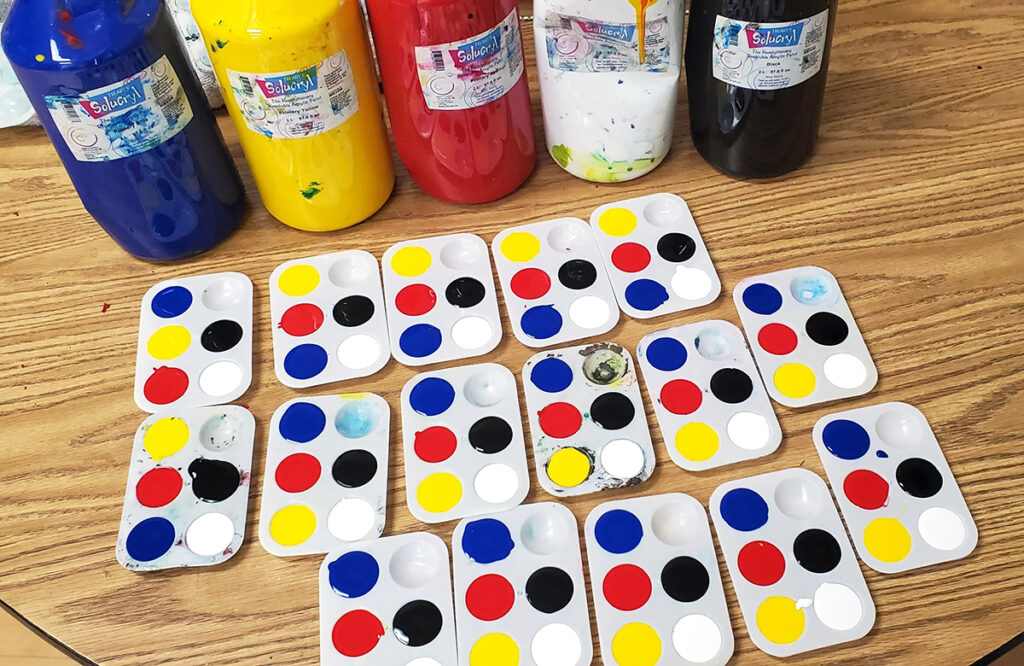
While the first three methods work well, they still leave several items that can clutter the tables and still get spilled.
Consider these additional innovative ideas that also work great for distance learning:
- Liquid Watercolor Paint Dots
Prepare and dry in advance, directly on watercolor sheets. This method allows you to control the amount and placement of the paint to fit your lesson best. You can also create warm or cool color groupings or add black and white to mix tints and shades. One caveat is that students will have to work within the constraints of the amount of paint already applied to their paper. - Resoluble Acrylic Paint
This is a water-soluble, acrylic-like paint that can be left out to dry. It is then reconstituted by adding water. It has a more opaque and tempera-like quality. It also does not require the substitute teacher to pour permanent paint.
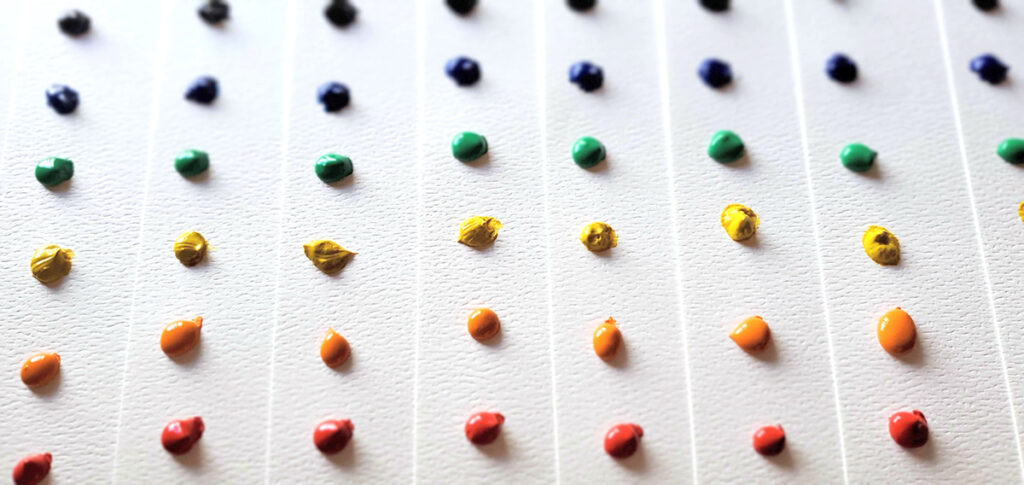
6. Sharps
Fewer things can make your heart skip a beat in the classroom; one example being when a sharp tool goes missing. Some of these tools include scissors, craft knives, and awls. You must track these tools and make sure they are returned when they are loaned out to students and colleagues.
Look at these storage solutions that only take a second to scan for the correct quantity:
- Scissor or screwdriver storage rack
- Water bottle ice “tube” tray for craft knives
- Magnetic strip to collect metal items like awls, scissors, and needles
- Pegboard hooks
- Foam block with a numbered grid for storing craft knives and sharpies placed upside down into their glued-in caps
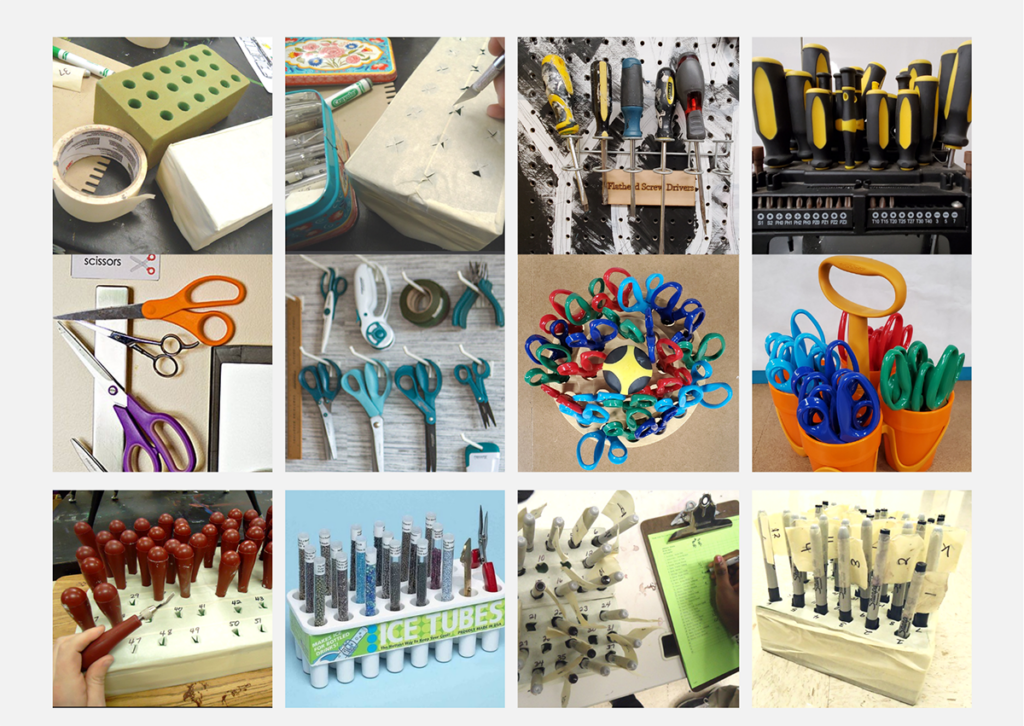
4. Provide details on additional responsibilities.
After setting the tone, planning your lessons, and organizing all your materials, you may be ready to head out the door. Not so fast! Your substitute teacher will greatly appreciate having an understanding of all of the auxiliary aspects of your position that are not obvious yet incredibly helpful to know.
Here are four areas to consider sharing with your substitute:
1. Emergency Kit and Protocols
Include a one-sheet overview of your emergency kit and protocols in your classroom binder. Schools usually have a bag or emergency backpack full of supplies, a safety vest, and a student roster located prominently in each classroom. Indicate the location of these items and any protocols for their usage in the event of a drill or emergency. If emergency drill dates and times are distributed ahead of time, advise the substitute to prepare the class for cleanup early to eliminate extra mess and chaos.
2. School Calendar
Connect your substitute to your school’s calendar or your class calendar via invite or physical copy. This will help them plan for staff meetings, department meetings, emergency drills, assemblies, schedule updates, and more. If emergency drill dates and times are unknown, ask a colleague to remind and direct them if possible.
3. Extra Duties, Clubs, and Office Hours
Your substitute should know if you have lunch duty or carpool support so they can plan their lunch breaks and dress accordingly. Some schools offer clubs or electives during the school day with a different schedule or different systems, such as paper attendance. Be sure to explain any new procedures. If you maintain office hours, discuss if these are compatible with your substitute’s schedule. If needed, change them to work for your substitute or postpone them until you return.
4. Bulletin Boards
Whether on a monthly rotation or assigned for the year, this is one of the duties that is helpful to have a colleague or teaching partner assist with or take over. Leave any requirements for the bulletin boards or display cases, such as themes. Enlist reliable students to prepare work for hanging.
Regardless of the type of extended leave you require, take care of yourself. Planning your leave before you need it will reduce your stress and support your ability to focus. Accomplish your most important (and favorite!) assignments before you leave, and adapt existing resources, such as FLEX. Even if you plan everything in advance, remember to have realistic expectations. No matter how much preparation you do or how convenient you make everything, substitutes often go off-script. Roll with it and recognize what you cannot control. Leave work at work and allow your department, colleagues, and parent volunteers to step in and assist. Focus on your recovery, parental leave, mental health, or whatever the reason was for taking leave, then come back well-rested and ready to make more art!
What are your best organizational tips to prepare for extended leave?
How do you approach your leave of absence with your students?
Magazine articles and podcasts are opinions of professional education contributors and do not necessarily represent the position of the Art of Education University (AOEU) or its academic offerings. Contributors use terms in the way they are most often talked about in the scope of their educational experiences.
